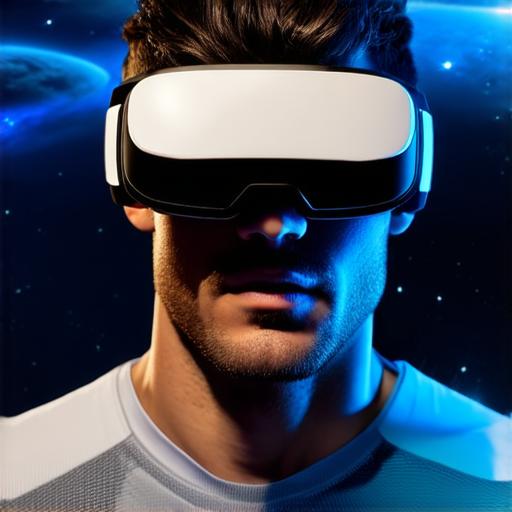
Why virtual reality is the future
What is Virtual Reality?
Virtual reality is a technology that simulates 3D environments in a computer-generated world. It uses sensors and cameras to track the movement of your head, allowing you to explore these virtual worlds as if you were really there. VR can be experienced through a variety of devices, including headsets, gloves, and handheld controllers.
The Rise of Virtual Reality

Virtual reality has been around for several decades, but it’s only in the last few years that it has become more accessible and affordable. The development of high-quality graphics, powerful computers, and advanced motion tracking technology have all contributed to the rise of virtual reality. In addition, the increasing popularity of smartphones and other mobile devices has made it easier for people to experience VR on the go.
The Benefits of Virtual Reality
There are many benefits to using virtual reality, both personal and professional. For gamers, VR offers a level of immersion that can’t be achieved with traditional gaming platforms. For example, playing a first-person shooter game in VR feels like being transported to a different world, where you can interact with the environment in ways that aren’t possible on a screen.
Virtual reality can also be a powerful tool for education and training. By creating realistic simulations of real-world scenarios, VR can help students and professionals learn new skills in a safe and controlled environment. For example, medical students can practice surgeries in a virtual operating room, while pilots can simulate flights without putting anyone’s life at risk.
Virtual reality can also be used for therapy and rehabilitation. By creating immersive environments that can mimic real-world situations, VR can help patients overcome fear and anxiety disorders, as well as improve their physical coordination and mobility. For example, stroke victims can use VR to practice walking and balance exercises in a safe and controlled environment.
The Future of Virtual Reality
Virtual reality is still in its early stages, but it’s clear that its potential is vast. As technology continues to advance, we can expect to see even more innovative uses for virtual reality. For example, virtual reality could be used to create immersive marketing experiences, allowing customers to explore products and services in a more engaging way. VR could also be used to create interactive art installations or even virtual amusement parks.
The Challenges of Virtual Reality
While virtual reality has many potential benefits, it also presents some challenges. One of the biggest challenges is motion sickness. When you’re immersed in a virtual environment, your brain can become disoriented and confused, leading to feelings of nausea and dizziness. This can be particularly problematic for people with a history of motion sickness or those who are prone to vertigo.
Another challenge is the cost of VR technology. While prices have come down in recent years, high-quality VR systems can still be quite expensive. In addition, there’s a learning curve associated with using VR technology, which can make it difficult for some people to get started.


